Summer in Verona: top 7 tips
Traveling, summer, pasta, pizza, coffee, gelato… These are a few of my favorite things in life. So, Italy is, understandably, one of my favorite travel destinations. I recently visited Rome for the third time. Last summer, however, I visited Verona for the first time. Located in northeastern Italy, Verona is worldwide famous for being the setting of William’s Shakespeare’s ‘Romeo and Juliet’.
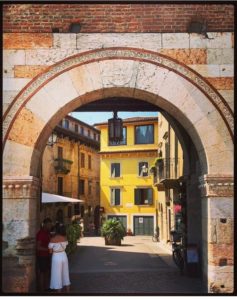
Here are my top 7 tips for Verona:
1. The Opera Festival
The Opera Festival was undoubtedly the highlight of my visit. It takes place in the Arena di Verona, an open-air Roman amphitheater located in the heart of the city. This summer, it runs from 21st June to 7th September, and features productions of operas by Giuseppe Verdi (La Traviata, Aida, Il Trovatore), Georges Bizet (Carmen), and Giacomo Puccini (Tosca). It also features a performance by Placido Domingo, as well as a performance of Carl Orff’s Carmina Burana. Prices start from as little as 16 euros.

Afterward, visit the Gelateria Savoia for a taste of Italian gelato. Founded in 1939, the Gelateria Savoia is located on via Roma (opposite to the Arena di Verona) and for this very reason it stays open till late. I opted for Malaga (vanilla, raisins and rum), Nocciola (hazelnut) and Mandorla (almond).
2. The Verona Summer Theatre Festival
An alternative to the Opera would be a play under the moonlight in an open-air theater. The Verona Summer Theatre Festival (Estate Teatrale Veronese) takes place at the Teatro Romano (Roman Theater), but also at the Camploy Theater, from the 15th of June to the 14th of September. The program includes plays (by Shakespeare as well as other playwrights), music concerts (including jazz), poetry and dance performances.
3. The Città Antica (Centro Storico)
With a population of just over 250,000, Verona is the 12th largest Italian city. Stroll around the Città Antica (Old Town) or Centro Storico (Historic Center), the pedestrian-friendly heart of Verona, best explored on foot. You may follow the crowds to the Casa di Giulietta (Juliet’s House), but for a more authentic experience, simply ditch your map and follow your heart. Get lost in the small alleyways or walk by the river Adige, which cradles the Old Town on three sides. Undoubtedly, you will come across several squares (Piazza Bra, Piazza delle Erbe and Piazza dei Signori being the most famous) and many churches: Romanic, Gothic, Renaissance, and Baroque; my favorite was the Basilica di Sant’ Anastasia (pictured below).
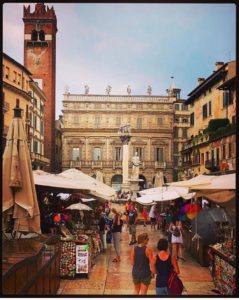
Located a bit further away from the Città Antica (but easily within walking distance) is also the Basilica di San Zeno. On your way there, make a small detour to admire the Castelvecchio fortress and the bridge of the same name (Ponte di Castelvecchio).
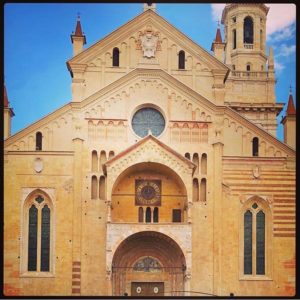
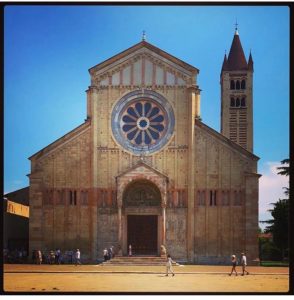
4. The Castel San Pietro
The Ponte di Castelvecchio is one of the seven bridges connecting the Città Antica with the opposite bank of the river Adige. To enjoy panoramic views of the city, cross over the Ponte Pietra and continue uphill to the Castel San Pietro; this is an easy and pleasant climb and the view will be compensation.
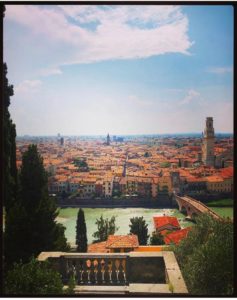
5. Coffee
For me, coffee is part of the Italian gastronomic culture as much as pasta, pizza and gelato. In the summer, I am always opting for an iced coffee; in Italy, this has to be the shakerato. Usually served in a martini glass, it is prepared by shaking together a shot of espresso with ice cubes and syrup.
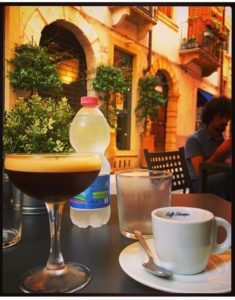
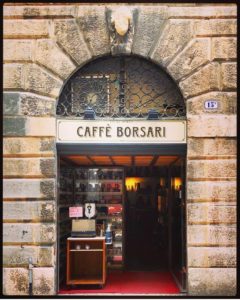
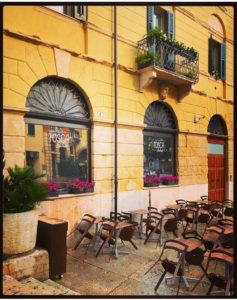
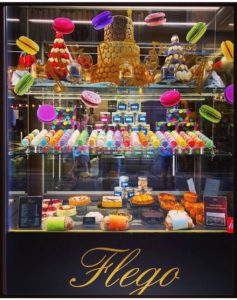
During my visit to Verona, I had coffee at the following cafes:
- Caffè Borsari (on Corso Porta Borsari)
- Tosca Bistrot (on Via Ponte Nuovo)
- Caffè-Pasticceria Barini (on Corso Porta Nuova, not far from the Arena di Verona)
- Pasticceria Flego (on via Stella, and also on Corso Porta Borsari)
- Nobis Café (on Via Fama, and also on Via Sant’ Egidio)
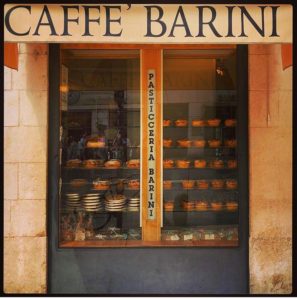
6. Food & wine
As far as food is concerned, Verona is no short of restaurants. With that said, it is quite easy to fall into tourist traps and have not as good a gastronomic experience. To avoid this, I have 3 tips:
- Avoid the restaurants located in the most famous and touristy piazzas (i.e. Piazza Bra), or by landmarks (unless, of course, you are only keen on location). If you’d rather have a more authentic and satisfactory culinary experience, be prepared to walk to the back streets, and you won’t be disappointed.
- Avoid restaurants with the menu in photographs. The bigger the photographs the worse.
- Avoid restaurants serving fast food from different countries, i.e. burgers, kebabs, or English breakfast.
With that said, here are the 5 restaurants where I dine during my last visit to Verona, and I would highly recommend:
- La Bottega della Gina, famous for the freshly-made tortellini, which you can enjoy there or on the go (on Via Fama, a few steps from Nobis Café)
- Osteria Caffè Monte Baldo (on Via Rosa, not to be confused with Via Roma, where the Gelateria Savoia is located)
- Osteria Al Carro Armato (on Vicolo Gatto)
- Ristorante Maffei (on Piazza delle Erbe)
- Osteria dal Cavaliere (on Piazzetta Scala)
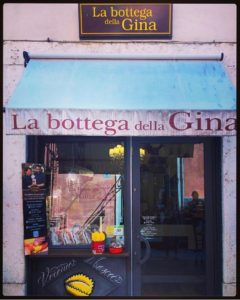
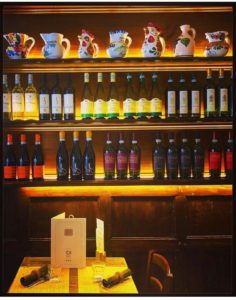
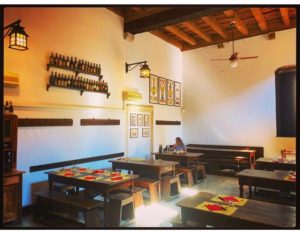
Food
The signature pasta of Verona is called bigoli and similar in shape to spaghetti, but thicker. Bigoli can be served with different sauces; try it with donkey (Bigoli con ragù di Asino) or horse (Bigoli con ragù di Cavallo), both popular types of meat in the region. Other typical dishes from Verona include gnocchi (potato dumplings served with different sauces), risotto with Amarone (a locally-produced wine) or with tastasal (a locally-produced sausage), and patissada de caval (horse meat stew).
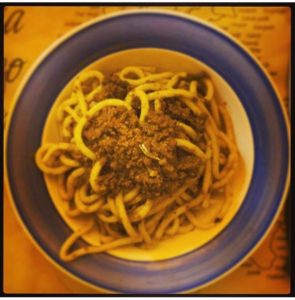
Wine
Typical wines of the region include Bardolino, Valpolicella, and Amarone (all red), as well as the white wine Soave.
7. Gelato & dolci
Verona is no short of gelaterias either. As mentioned, the Gelateria Savoia is located on via Roma (opposite to the Arena di Verona) and stays open till late. There’s also the Gelateria Biologica Come Una Volta on Via Pellicciai. Another gelateria I visited (more than once I have to admit) is the L’ Arte del Gelato on Via Leoni (the name says it all). There are also three of the most famous gelato chains: Amorino (on Corso Sant’ Anastasia), Grom (on Via Giuseppe Mazzini, also close to the Arena di Verona) and Venchi (also on Via Giuseppe Mazzini, but there’s another branch on Via Cappello, a few steps from the Case di Giulietta).
Now, if you’re not such a huge fan of gelato, or if simply you have a sweet tooth and want to try even more desserts, then head to the Dolce Locanda on Via Valerio Catullo.
If you visit Verona over the Christmas period, there’s a small chance that gelato may not be as appealing as in the summer; either way you’ll have to try the Pandoro, a traditional Christmas cake from Verona.
Getting to Verona
Valerio Catullo is Verona’s international airport; it is located 10 km southwest of the city. I flew from London; although I took a direct British Airways flight, the cabin service was what I would expect from a low-cost airline (but the price I’d paid was certainly not low). From the airport, there are frequent buses to Porta Nuova railway station; from there, the Città Antica is no more than 20 minutes on foot.
Accommodation
To make the most of your visit to Verona, I would highly recommend staying in the Città Antica, or within walking distance. I stayed at the Opera Relais de Charme, on Via Valerio Catullo (a few steps from the Dolce Locanda).
When and how to long to visit for
Summers in Italy can be really hot, but there is definitely something magical about seeing an opera at the Arena di Verona, and then queuing for a gelato at the 80-year-old Gelateria Savoia.
To visit the places mentioned in this post, you don’t need more than 2 days, but this will certainly not be enough to fully enjoy Verona and thoroughly experience the dolce vita. The more days you spend here, the better.
Having said that, Verona is very close to the lake Garda, so why not combine your visit to the city with a stay there? Peschiera del Garda and Desenzano del Garda are the lakeside towns closest to Verona; they are both on the southern part of the lake. From Verona, you can easily get there by train (15 minutes to Peschiera, or 20 minutes to Desenzano) or by car (about half an hour).
Further reading
If you have enjoyed reading my tips and want to read more about summer destinations, check out my posts ‘Summer in Rome: top 7 tips’, ‘Summer in London: top 20 tips by a local‘ and ‘9+1 Greek islands to visit this summer‘.
To follow my travels around the world, simply subscribe to the Traveling Psychiatrist (subscription button on the left-hand side).
My e-book ‘Greek Islands: Top tips by an (almost) local’ is available for FREE for every new subscription (for a LIMITED TIME ONLY).
Buon viaggio!
Alex
(the Traveling Psychiatrist)
2 Comments
voicemod 1.2.6.1 crack
whoah this blog is wonderful i love reading your posts. Keep up the good work! You know, lots of people are looking around for this info, you can help them greatly.
admin
Thank you! I’m glad you’re enjoying my posts!